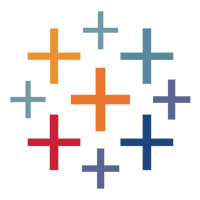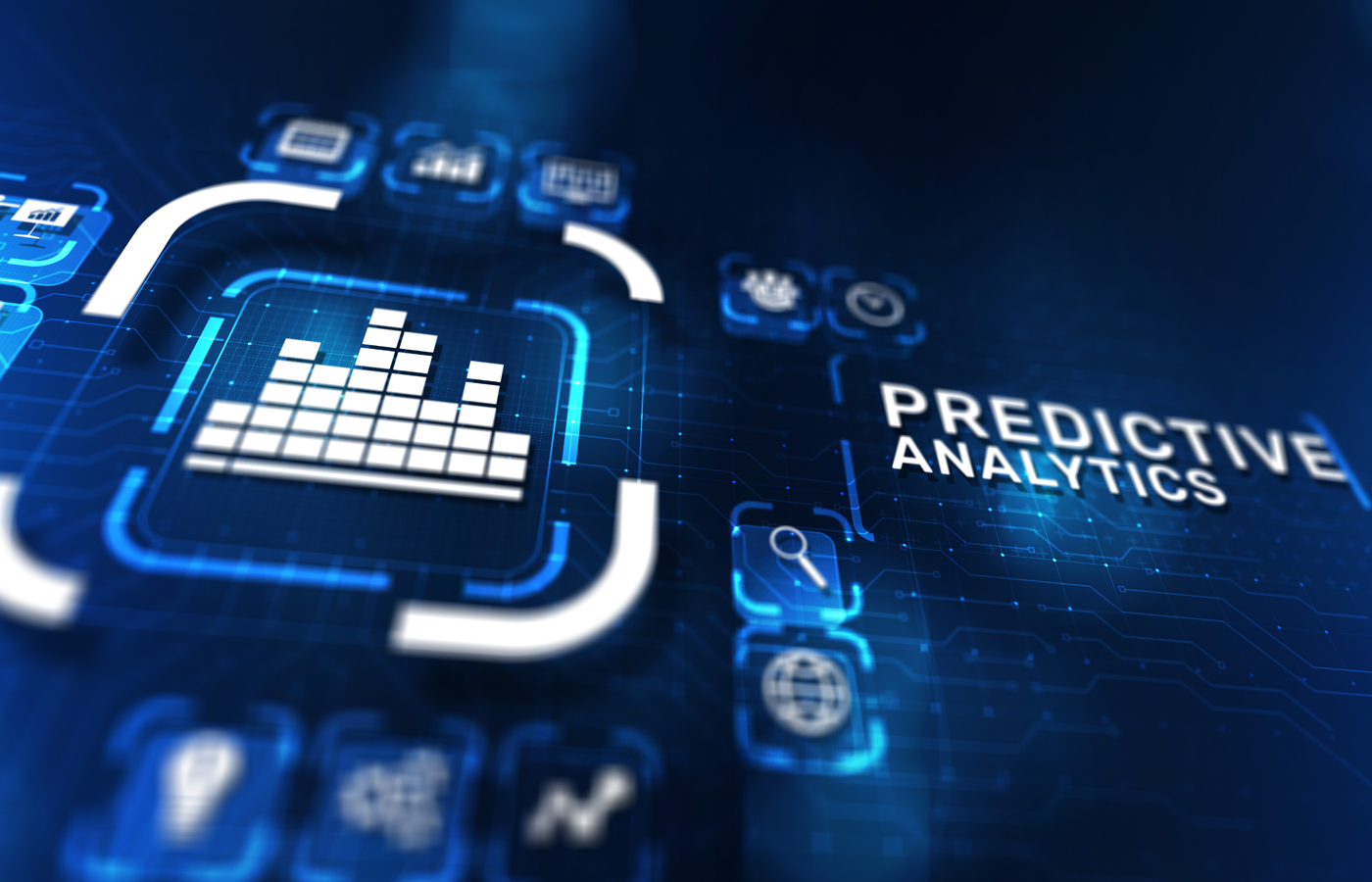Predictive analytics uses data, statistical algorithms, and machine learning to forecast future outcomes based on historical data, helping businesses anticipate and prepare for future events with a high degree of accuracy. These forecasts predict industry trends and behaviors, guide informed business and investment decisions, and are sometimes used to boost efficiency, increase profits, and protect information.
In this guide, we’ll take a closer look at real-life predictive analytics examples and applications to show how companies are using it to improve their performance and gain competitive advantage.
What Is Predictive Analytics?
Predictive analytics is a subset of advanced analytics that uses machine learning (ML), predictive modeling, and other statistical methods to forecast outcomes based on patterns in vast historical datasets. It can be used to predict near-future events, like the likelihood of a machine’s malfunction, as well as such long-term forecasts as a company’s annual cash flows.
Companies rely on predictive analytics to detect patterns in data that identify risks and opportunities. They use predictive analytics techniques, including data mining, statistical modeling, and ML, to analyze past and current data. By predicting future trends and behaviors, these techniques present actionable insights for strategic decision-making and can help streamline operations by preparing businesses to tackle complex problems and discover new opportunities.
6 Predictive Analytics Examples
Predictive analytics is playing an increasingly important role in a wide range of industries, including retail, healthcare, finance, and manufacturing. By transforming historical data into actionable insights, it empowers organizations not only to react to changes but also to anticipate them.
Predictive Analytics in Finance
Predictive analytics is used to forecast future trends, risks, and outcomes in financial markets. It aids in detecting anomalies, personalizing services, and fine-tuning risk management, leading to improved portfolio performance and customer satisfaction. Finance applications include the following:
- Credit Scoring and Risk Assessment: Financial organizations use predictive analytics to assess creditworthiness and predict the likelihood of default for loan applicants, leading to more informed decisions when evaluating loan applications, setting interest rates, and managing credit risk.
- Fraud Detection and Prevention: By detecting unusual patterns or anomalies in transaction data, predictive analytics uncover fraudulent activities and avoid financial losses. Machine learning algorithms analyze large amounts of transactional data in real-time to discover unauthorized transactions, identity theft, and payment fraud, enabling prompt intervention and mitigation.
- Forecasting Cash Flow: Using historical data from previous financial statements and industry insights, predictive analytics helps businesses project sales, revenue, and expenses and lets organizations visualize future outcomes and make strategic decisions with confidence.
Predicting Analytics in Healthcare
Predictive analytics is used to analyze vast amounts of patient records, medical images, genetic information, and administrative data, leading to enhanced patient care and better patient outcomes. Healthcare applications include the following:
- Medical Diagnosis: Predictive analytics aids in analyzing patient symptoms, diagnostic tests, and medical imaging data to assist healthcare providers in making accurate diagnoses and treatment recommendations. ML algorithms allow clinicians to diagnose diseases earlier and choose appropriate treatment options.
- Disease Prediction and Prevention: Predictive analytics can identify individuals at risk of developing certain diseases or medical conditions based on genetic predisposition, lifestyle choices, and medical history by analyzing patient data and risk factors. Healthcare providers can implement preventive measures and personalized treatment plans to reduce the likelihood of disease occurrence.
- Clinical Trial Recruitment and Patient Stratification: Medical research organizations can use predictive analytics to find suitable candidates for clinical trials and stratify patients based on their potential to respond to specific treatments or interventions. Researchers can pinpoint possible trial participants, advance patient recruitment strategies, and tailor trial protocols to target patient populations most likely to benefit from the intervention, accelerating the drug development process.
Predictive Analytics in Manufacturing
In the manufacturing industry, predictive analytics can process sensor data, equipment logs, maintenance records, and production metrics. Predictive models are then developed to minimize stockouts, reduce maintenance costs, and optimize inventory levels. Manufacturing applications include the following:
- Inventory Management: By analyzing past data, market trends, and supplier performance metrics, predictive analytics helps manufacturers determine optimal reorder points, automate replenishment processes, and segment inventory items based on demand to ensure inventory levels are effectively managed.
- Predictive Maintenance: Manufacturers can predict equipment failures and maintenance needs before they occur, reducing unplanned downtime and costly repairs. By analyzing equipment sensor data, historical maintenance records, and operational parameters, manufacturers can find patterns and early warning signs of potential failures, enabling proactive maintenance interventions and scheduling downtime during planned maintenance windows.
- Quality Control and Defect Detection: Predictive analytics aids in forecasting and detecting product defects, minimizing waste, and ensuring product quality. By assessing sensor data, production parameters, and historical defect records, manufacturers can spot potential quality issues, anticipate defects in real-time, and take corrective actions to prevent defective products from reaching the market.
Predictive Analytics in Marketing
Predictive analytics can process large datasets containing customer information, purchasing behavior, demographics, and engagement metrics to help marketers anticipate trends, target audiences, and allocate resources, driving higher ROI on marketing investments. Marketing applications include the following:
- Customer Segmentation: Predictive analytics can segment customers based on demographics, purchasing behavior, and psychographic characteristics to establish distinct customer segments with unique needs and preferences, allowing for targeted marketing campaigns and personalized messaging tailored to each segment.
- Content Recommendations: Predictive analytics helps personalize content and recommendations for website visitors, email subscribers, and social media followers based on interests, preferences, and browsing behavior. By evaluating user interactions, content consumption patterns, and demographic data, marketers can deliver more relevant and engaging content experiences, increase engagement rates, and drive conversions.
- Campaign Optimization: By predicting campaign outcomes and finding areas for improvement, predictive analytics can lead to better marketing campaigns by helping marketers revamp messaging and creative elements and allocate resources more effectively.
Predictive Analytics in Retail
Companies in the retail industry make use of predictive analytics to study extensive datasets, including sales transactions, customer demographics, inventory levels, and market trends. The insights help retailers prepare for shifts in consumer behavior, tailor offerings to meet customer preferences, and drive higher sales while providing a more satisfying shopping experience for customers. Retail applications include the following:
- Predicting Buyer Behavior: Forecasting consumer behavior is one of the most common uses of predictive analytics and involves reviewing historical sales data, customer demographics, and purchasing patterns to anticipate how customers will behave in the future. Predictive modeling helps retailers understand customer preferences, propensity to purchase, and likelihood of engaging with specific products or promotions.
- Demand Forecasting: Predictive analytics can forecast future demand for products based on past sales data, seasonal trends, and market conditions. By accurately predicting demand, retailers can reduce stockouts and make sure the right products are available at the right time.
- Price Optimization: Retailers can revise pricing strategies by predicting price elasticity, demand sensitivity, and competitive dynamics. By analyzing historical pricing data, competitor pricing, and customer behavior, businesses can adjust pricing in real-time and offer personalized pricing incentives to increase profitability while remaining competitive in the market.
Predictive Analytics in Supply Chain Management
Predictive analytics leverages historical data from sales, inventory levels, transportation routes, weather conditions, and supplier performance to anticipate changes in demand. This allows for efficient resource allocation, shorter lead times, minimized stockouts, and higher levels of customer satisfaction while reducing costs throughout the supply network. Supply chain applications include the following:
- Production Planning: Predictive analytics guides production planning processes by giving insights into expected customer demand. This helps organizations adjust production schedules and make sure that production capacity aligns with demand, avoiding underproduction or overproduction.
- Risk Management: With predictive analytics, businesses can detect and mitigate geopolitical risks, natural disasters, and market fluctuations. By analyzing historical data and external factors, companies can unveil potential issues, assess their potential impact, and develop contingency plans to reduce disruptions and secure business continuity.
- Warehouse Management: Smooth warehouse operations can be ensured by forecasting demand, optimizing layout and storage, and rectifying labor allocation. By evaluating order data, inventory levels, and throughput rates, organizations can make changes to their warehouse layout, automate picking processes, and streamline operations to boost efficiency and cut down costs.
Top 3 Recommended Predictive Analytics Tools
Predictive analytics tools help hone your business operations, no matter your industry. Their wide-ranging capabilities help your business leverage data for decision-making, streamline operations, and foresee upcoming patterns with precision. While there are many tools on the market, we recommend three predictive analytics solutions based on how well their features meet enterprise needs.

SAP Analytics Cloud
Best for Healthcare, Marketing, and Manufacturing
SAP Analytics Cloud is a comprehensive enterprise analytics solution that combines predictive analytics, business intelligence, and planning capabilities into a single cloud-based platform. This tool streamlines data understanding and uses generative AI to automate reporting, discover hidden insights, and create and develop business plans.
SAP Analytics Cloud specializes in real-time analytics, particularly for Internet of Things (IoT) and streaming data. Its vast ecosystem includes numerous extenders and provides a centralized view with consolidated analytics.
However, there are areas where SAP Analytics Cloud could improve. Its integration with non-SAP systems can be complex, and there is a steep learning curve for those without a background in analytics. While there are challenges in the initial stages of adoption, the potential benefits of SAP Analytics Cloud can make the effort worthwhile for many organizations.
Visit SAP Analytics Cloud

Best for Finance and Supply Chain
The Alteryx AI Platform unifies data preparation, AI-powered analytics, and ML into a single solution, equipping organizations with automated data preparation and actionable insights in an integrated environment. It enables analysts to prep, blend, and analyze data by creating repeatable workflows using a visual interface.
Alteryx offers a range of AI-based applications used to mine text, create predictive models, and carry out assisted modeling. The AiDIN AI engine enhances its ability to accelerate intelligent decisions across your enterprise. Like other predictive analytics tools, this solution has its weaknesses. It offers limited visualization options compared to competitors and has a steep learning curve. With that said, this predictive analytics tool can bring substantial benefits to your organization once you’ve learned it inside out.
Visit Alteryx AI Platform

Tableau
Best for Retail
Tableau is a well-known data visualization tool that comes with powerful predictive analytics capabilities. It simplifies data processing to make decision-making more efficient and offers time-series analysis, letting users perform predictive analytics, such as forecasting, within a visual analytics interface.
Tableau can handle large amounts of data and create complex data flows. In addition, it integrates seamlessly with advanced AI and ML, further expanding its predictive analytics capabilities. Among its drawbacks are the steep learning curve and poor customer support quality. However, once accustomed to Tableau, you can harness its robust data visualization and business intelligence capabilities and improve your data analysis. Additionally, Tableau offers in-depth documentation and online resources to help you out if you can’t get ahold of customer support.
Visit Tableau
Frequently Asked Questions (FAQs)
What Are Examples of Predictive Analytics Models?
Examples of predictive analytics models include the following:
- Regression Models: Predict the value of a target variable based on one or more input predictor variables.
- Decision Trees: Use a tree-like graph to determine a course of action or show a statistical probability.
- Neural Networks: Computing systems inspired by the biological neural networks that constitute animal brains used to estimate or approximate functions that can depend on a large number of inputs.
- Time Series Models: Analyze ordered, often temporal data to extract meaningful statistics and characteristics about the data and predict future points in the series.
- Clustering Models: Partition the input data into sets or clusters in which the data shares some common trait.
- Classification Models: Forecast categories of given data points—examples include logistic regression, decision trees, random forest, neural networks, and Naïve Bayes.
What Are the 4 Types of Analytics?
The following are the four types of analytics:
- Descriptive Analytics: Summarizes raw data and makes it interpretable.
- Diagnostic Analytics: Examines data to understand the cause of past events.
- Predictive Analytics: Uses statistical models and forecast techniques to understand the future.
- Prescriptive Analytics: Uses simulation algorithms to advise on possible outcomes.
What Is Prescriptive Analytics vs. Predictive Analytics?
Predictive analytics uses historical data to forecast potential future outcomes. It identifies patterns in past data to predict what might happen next. Prescriptive analytics, on the other hand, goes a step further—it not only predicts future outcomes but also suggests actions to achieve specific goals. It recommends the best course of action based on the predicted outcome.
Bottom Line: See the Future With Predictive Analytics
Predictive analytics can be used for a wide range of applications across diverse industries, making it a valuable tool for companies seeking competitive advantage and innovation. It can help companies proactively spot trends and steer the business toward growth and prosperity. As technology and data science continue to evolve, the capacity for predictive analytics to generate impactful results and transform the business landscape will continue to grow and play an increasingly bigger role in strategic decision-making.
Find out the key players in the predictive analytics industry today by reading our top picks for best predictive analytics tools for 2024.



